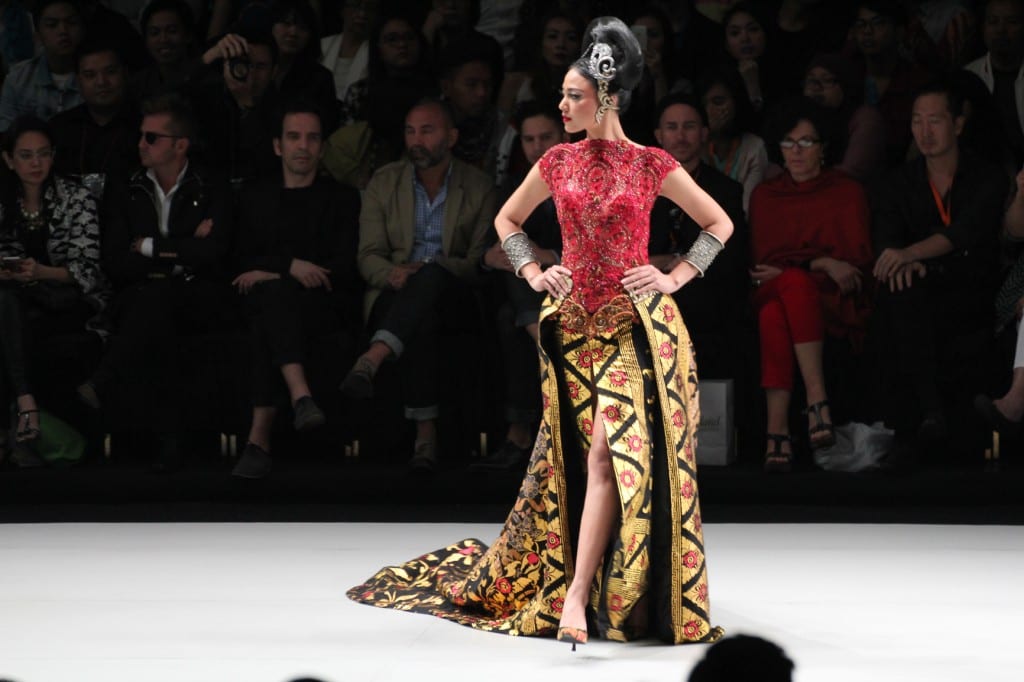
The year 2015 has been special for Indonesia’s fashion scene — thanks to the rising popularity of local brands.
Throughout the year, new fashion labels have been popping up, while fashion events have continued to be a paradise for fashion enthusiasts looking for trendy fashion products.
Fashion observer Diaz Parzada said that this year the country had seen a phenomenal wave of ready-to-wear fashion, which became the main focus of many designers and brands.
Ready-to-wear has been thriving for the past two years due to its ability to reach a wider audience, and of course, to generate profit.
“This is a breakthrough as designers are not just people who make clothes but also professional business players that have many doors through which to distribute their works,” said Diaz, who is also the advisor for designer mentoring program Indonesia Fashion Forward and the business development director at the British Council.
Veteran designers like Biyan Wanaatmadja and Sebastian Gunawan were the first to tap into the ready-to-wear industry, and many young designers are now following their lead.
Young couturier Tex Saverio, who is known for his high fashion pieces, is one example.
He launched his second ready-to-wear line, TXID, earlier this year after receiving good responses to his first ready-to-wear line, Tex Saverio Jakarta, and his collaboration with a couple of foreign online ready-to-wear brands.
“Through ready-to-wear, I want to promote Indonesian fashion to the world. In addition to that, I want to educate the Indonesian market, to teach them that a fashion house should not have only one line,” Tex said.
Many celebrities and fashion lovers also set up their own fashion ventures this year, offering fashion products at more competitive prices through various online platforms or fashion bazaars.
However, that online phenomenon has also made the executive director of the Indonesian Fashion Designers Association (IPMI), Tri Handoko, concerned about a paucity of strong design characteristics differing from one brand to another.
“Most of those new brands offer similar designs; their lookbooks are even similar with no distinct identity visible in their collections,” he said.
“On one hand, that movement shows support for local fashion, but on the other hand, the creativity level is stagnant to some extent.”

Diaz also voiced the same concern, saying that some designers had shared with him that their designs had been copied by many online fashion sellers.
“Like it or not, designers have to accept it. But moving forward, they must explore more creative ideas for their new designs while creating powerful campaign strategies to build strong fashion brands,” he said.
Another highlight of the year came from Muslim fashion, better known nowadays as modest wear.
Earlier this year international retailers Uniqlo, from Japan, and Sweden’s H&M, launched a campaign to promote modest wear, moves that have been greatly welcomed by Indonesia’s hijab communities.
Modest wear designer Norma Moi said that 2015 had been a good year for her business and she had recorded a steady increase in demand.
“My profit increase has been in line with the increase in my resources — around 40 to 50 percent,” Norma said.
The thriving business of modest wear in Indonesia has prompted the government to aim to make the country the center of Islamic fashion by 2020.
It is not an ambitious goal, so long as designers continued to innovate.
“We have to keep innovating and always be creative, making our designs interesting and unique, if we want to be the center of Muslim fashion,” she said.
But to really realize the plan, the government must also participate by providing designers with proper production supplies, such as materials.
Norma said many designers, including her, still used imported fabrics due to the quality and availability.
“There are local textile producers that also make fine fabric, but most of them only want to sell to big retailers that buy in bulk. We don’t have the capacity to make our own fabric yet, so we have no choice but to import,” she said.
“The producers and the government should understand that there’s also us in this fashion business, not only big retailers.”
Though modest wear recorded a strong performance this year, other designers saw lower sales from the middle of the year forward.
Tri said that his business was declining as it entered the second semester, blaming the slowing economy as a key factor.
Another designer, Sapto Djojokartiko, echoed him, saying that he also saw slower sales in his mid-priced pieces.
“I’m not sure about the cause, but I have prepared some strategies to improve the whole business next year,” he said.
As 2015 moved toward the end, Indonesia’s fashion scene was shocked by the resignation of seven senior members of Association of Indonesian Fashion Designers and Entrepreneurs (APPMI), including the chairman who is also the president director of Indonesia Fashion Week (IFW), Ali Charisma, Deden Siswanto and Lenny Agustin.
Different visions to those of the association is reportedly behind their resignations. As a consequence, those who replace the steering committee of IFW have their work cut out for them to ensure the continuation of IFW early next year.
“The resignation of APPMI leading members should be a cause for reflection for our fashion scene; what form of fashion association fits the situation today? Or is it still important to have such an association? Regarding whether it will impact our fashion scene or not, we have to wait and see,” Diaz said.
In 2016, Indonesian fashion products are predicted to remain favorites for fashion enthusiasts who have developed more pride in wearing local designs.
Indonesian designers will continue to wow the international fashion audience next year as some will participate in prestigious fashion events, such as London and Paris Fashion Weeks.

